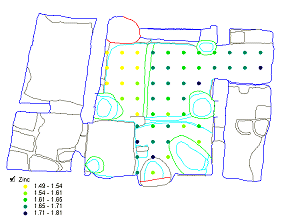Micromorphology and Sampling
by Wendy MatthewsAs always, a detailed sampling strategy was deployed to ensure that as much information as possible is extracted from the deposits being excavated. Depositional sequences are being analysed by Cambridge, METU, and Wisconsin Universities. The aim is to detect microscopic, chemical and elemental traces of activities and micro-environment within the Neolithic settlement and landscape.
Microscopic analysis of fine water-laid silts and sands at the base of the deep sounding and KOPAL excavations, suggest this area was a delta at the edge of the Pleistocene lake. The presence and preservation of diatoms, pollen, mineralised seeds, bright reddish-brown organic staining and well preserved bone, suggest that deposits were very moist during early occupation at the site, and have remained so. Translocation and re-deposition of fine sediments suggest there has been some fluctuation in the water-table at the base of the mound, in the Neolithic, or more recently.
|
Microscopic analyses enabled identification and study of stable and midden deposits, and probable fired lime-plasters and lime-burning, in Space 181. They are also contributing to study of uses and concepts of space in buildings in the South and BACH areas. Samples for phosphate and elemental (ICPAES) analyses were collected at 50cm intervals across floor surfaces. Results are detecting considerable variation in the traces of activities on burial platforms and in food preparation and cooking areas (Figure 17). |
 Figure 17: Results of chemical sampling for Zinc in Building 5 in 1998 |